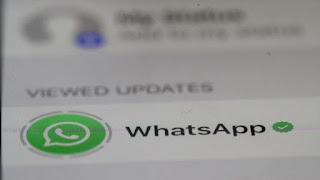WhatsApp is now one of the most popular instant messaging applications in the world. But who would have thought, the birth of WhatsApp was filled with many issues that made the two founders almost give up.
WhatsApp was founded by Brian Acton and Jan Koum, two former Yahoo employees. After Koum bought the iPhone in 2009, he and Acton intended to create an app to take advantage of the revenue opportunities from the Apple App Store.
The concept of an application was created that allows users to update the status that can be seen by their contact list, so users can show their location or what they are doing. Koum then recruited iPhone developer Igor Solomennikov, and they created the first prototype.
Jan Koum then chose the name WhatsApp for this app because it sounded like 'what's up'. The first version of the WhatsApp application was then launched but it was not as smooth as imagined.
The first users who are still a little complaining about the WhatsApp application which has many problems, ranging from connectivity issues to crashes. WhatsApp was starting to look like a failed app, and Koum even thought about leaving the project and looking for a new job.
However, Acton asked Koum to stick around for at least the next few months. WhatsApp's fate then began to change when Apple launched a push notification feature that allows users to receive notifications even if they don't open the app.
Koum later released a WhatsApp update that allowed the app to send push notifications to all contacts when a user changed their status. Not long after, WhatsApp users who were mostly friends of Acton and Koum started using the app to send pings to each other with custom messages, much like the instant messaging app functions.
Brian Acton and Jan Koum then redesigned their application and released WhatsApp 2.0 which focused on instant messaging in August 2009. WhatsApp's popularity skyrocketed in a short time, and the number of active users grew to 250,000 people.
After his successful start, Acton enlisted the help of his former partner at Yahoo to invest $250,000 in seed funding. After a beta trial period, WhatsApp for iPhone was launched on the App Store in November 2009, followed by Blackberry and Android versions.
WhatsApp then switched from a free application to paying USD 1 per year for the cost of sending SMS verification codes to users. In the years since, WhatsApp has continued to thrive thanks to a $50 million investment from Sequoia Capital.
After refusing to be bought by Google, WhatsApp was later acquired by Facebook (now Meta) in February 2014 for a dowry of USD 22 billion. After that WhatsApp became the most popular messaging application in the world with more than 600 million subscribers.
WhatsApp added many new features such as phone calls, eliminated subscription fees, and introduced end-to-end encryption. In 2016, WhatsApp announced a new privacy policy and will start sharing users' personal information with Facebook.
This new policy goes against Acton and Koum's principles of always putting privacy and user experience first. Not long after this update, Acton and Koum left WhatsApp and Facebook.
"In the end, I sold my company," Acton told Forbes, as quoted by CNBC, Saturday (20/8/2022).
"I sell user privacy for greater profit. I make choices and compromises. I have to live with those choices every day," he continued.
Now WhatsApp is getting bigger and is being prepared to become a cash field for Meta. Unlike Instagram and Facebook, Meta has not managed to make a profit from WhatsApp even though it already has two billion users worldwide.
This monetization will be focused on WhatsApp Business. One of them is by launching a premium service that allows businesses and MSMEs to connect 10 devices in one account.
"WhatsApp is going to be the next chapter, with business messaging and commerce being the big thing out there," Meta CEO Mark Zuckerberg told CNBC.

